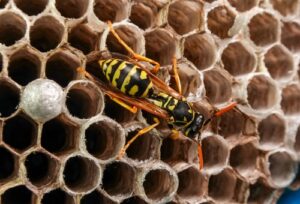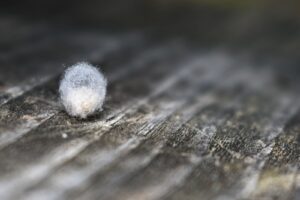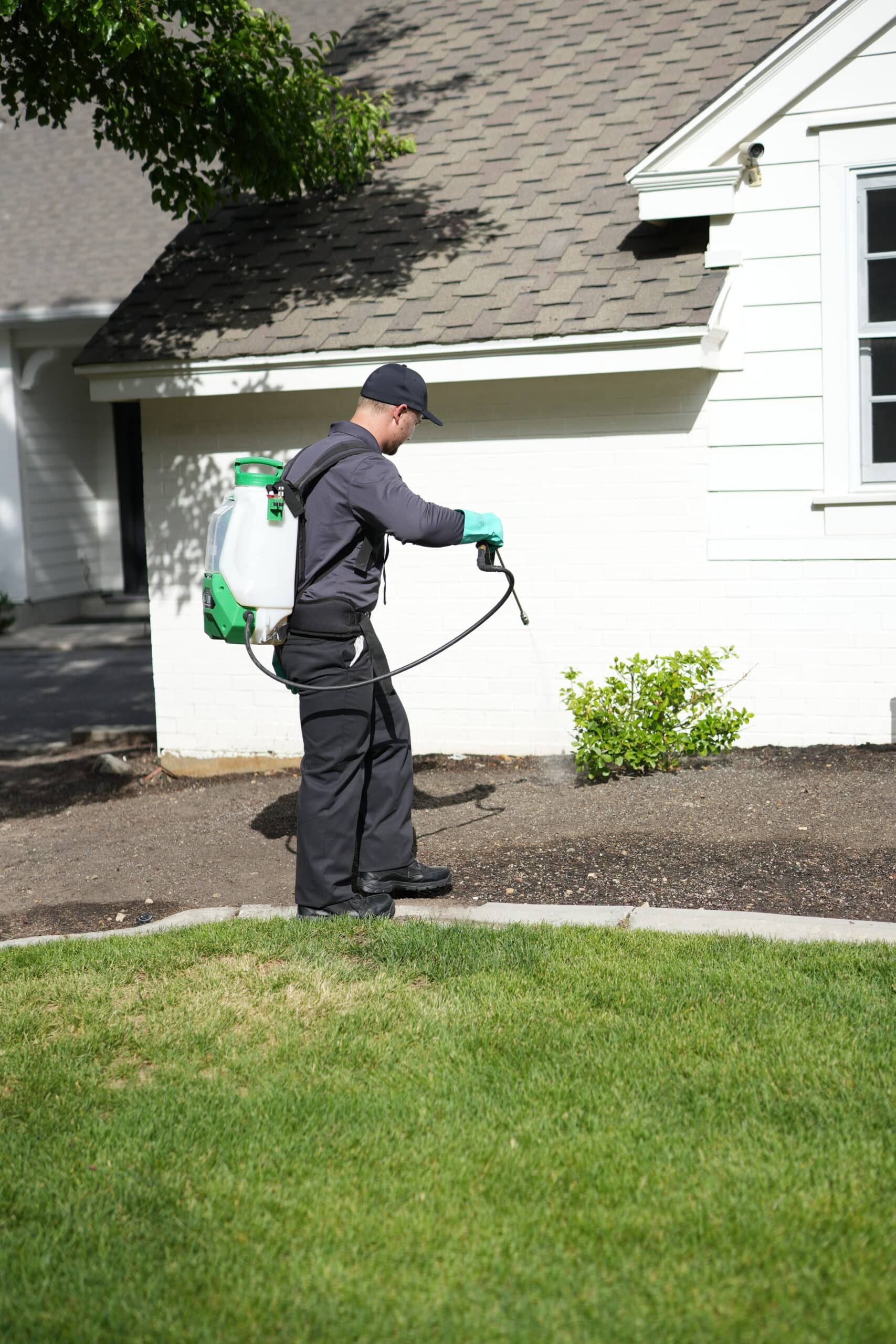Flea Facts & Information
Hawx is always reliable. Always innovative.
20,000+ 5-STAR REVIEWS
“Connors Trader went the extra mile to make sure he listened to our needs regarding the ant problem we had.”
- Larry
“He sprayed indoors and out, swept my eaves for spider webs and took care of a couple of wasp nests.”
- Rick
“He even sprayed on my deck, which no one else has done.”
- Sue

Fleas are, unfortunately, a common household pest, lurking wherever they can find warm-blooded hosts. Despite their small size—often just a few millimeters in length—these blood-feeding insects can quickly become a huge headache for both people and pets. Plus, while their bites can be annoyingly itchy, certain flea species are also known to carry diseases that affect humans and animals alike.
Curious about how to keep these parasites out of your home? Let’s take a closer look at flea identification, what may be drawing them indoors, and the most effective ways to deal with an infestation.
Flea Identification: How to Spot Different Types of Fleas
Fleas are wingless, reddish-brown insects that appear flattened from side to side. Although they’re very tiny—typically between 1/16 and 1/8 of an inch long—they’re surprisingly agile jumpers, often able to leap over 100 times their own body length. This ability helps them latch onto passing hosts, whether it’s a dog, cat, or a person.
Even though thousands of flea species exist worldwide, only a handful make it inside U.S. homes. Here are some of the most commonly encountered species:
Cat Flea (Ctenocephalides felis)
Despite the name, cat fleas will happily infest dogs as well as felines. These are the most widespread fleas in American households and can pass along illnesses such as murine typhus. Because they remain on their host after feeding, cat fleas tend to lay eggs directly in a pet’s fur.
Dog Flea (Ctenocephalides canis)
Less common in North America than the cat flea, dog fleas still show up on pets and can pass tapeworms to both animals and humans. They look similar to cat fleas and share similar behaviors but often prefer canines over other hosts.
Oriental Rat Flea (Xenopsylla cheopis)
Primarily found on rats, this flea can sometimes bite humans when its preferred hosts aren’t available. They are known to spread serious illnesses like plague and murine typhus.
What Draws Fleas Indoors?
Fleas are basically incredibly skilled hitchhikers, entering homes on whichever pets or rodents give them a free ride. They rely on warmth, moisture, and a ready supply of blood for survival—which explains why they gravitate to our furry friends. Carpets, bedding, and furniture offer perfect nesting spots for their eggs and larvae.
Climates with higher humidity tend to have higher flea populations, and in milder regions, fleas can be a year-round problem. If your pet roams outdoors or interacts with other animals, that increases the risk of bringing fleas inside.
Signs of a Flea Infestation
Fleas aren’t always easy to spot with the naked eye. Still, there are some telltale signs that can help you detect an infestation before it grows too large:
- Itchy, Red Bites: These often appear on lower legs or around the waist in small, clustered dots. Some individuals and pets may experience more intense reactions.
- Flea “Dirt”: Tiny dark specks on your pet’s skin or fur that resemble black pepper. If you place these specks on a damp tissue, they leave a reddish-brown stain—a clear indicator of digested blood.
- Pet Discomfort: Excessive scratching, grooming, or restlessness in your dog or cat can signal fleas.
- Flea Life Stages: Eggs and larvae are tiny and can hide in carpets, bedding, and furniture. You might notice worm-like larvae in darker crevices if the infestation is severe.

“Fleas have evolved to be taller and skinnier (horizontally flattened) so they can move quickly through dense hair. People and pets can bring them in on clothing, shoes, fur, or pant legs as larva. They will feed on pretty much any animal: the adults eat blood meals and the larva eat the dried blood that the adults leave behind. Please note that fleas are capable of transmitting several organisms that cause diseases, so treatment is crucial. ”
Vice President of Technical & Training Services, Entomologist
What Damage Can Fleas Cause?
While fleas don’t destroy property the way some other pests do, they can have a big impact on your health and your pets’ health. Not only do flea bites lead to itching and discomfort, but they also open the door to potential diseases such as plague, murine typhus, and cat scratch disease. Pets that develop allergic reactions to fleas may experience severe skin irritation and hair loss. Repeated bites can trigger hives or more intense rashes in people.
How Do You Get Rid of Fleas?
You need a coordinated approach. Combating a flea infestation involves addressing both immediate food sources and potential breeding grounds in your home and yard.
Treat Your Pets:
- Regular Grooming: Frequent baths and brushing can help remove fleas and flea dirt.
- Preventive Treatments: Rely on veterinarian-recommended products like topical solutions, oral medications, or flea collars.
- Limited Outdoor Exposure: Reducing your pet’s time in high-flea areas can lower their risk of bringing fleas home.
Clean Your Home:
- Vacuum Often: Target carpets, rugs, and furniture where fleas or eggs may lurk. Empty or discard your vacuum bag outside to prevent re-infestation.
- Wash Bedding: Use hot, soapy water to kill fleas in pet beds, blankets, and any fabric surfaces your pet frequents.
- Steam Cleaning: High heat can eradicate fleas in all stages, including larvae and pupae.
Maintain Your Yard:
- Mow the Lawn: Short grass exposes fleas to sunlight, reducing their survival.
- Reduce Debris: Clear leaves, brush, and twigs to discourage rodents and stray animals that carry fleas.
- Apply Treatment: In areas of heavy flea activity, a targeted insecticide can create a protective barrier.
Rodent Control:
- Secure Food Sources: Store pet and people food in sealed containers.
- Minimize Hideouts: Clean up clutter indoors and out, sealing any entry points around your home’s foundation.
Let Hawx Handle Your Flea Problem
When fleas keep returning despite your best efforts, it’s time to call in professional help. At Hawx Pest Control, we understand the ins and outs of local pest behavior, including fleas and the animals that bring them. Our dedicated technicians use advanced strategies and products to eliminate fleas at every life stage, safeguarding you, your family, and your pets.
Reach out to Hawx Pest Control today for a detailed inspection and customized treatment plan. We’ll create a thorough barrier around your home, target flea nesting sites, and provide ongoing support so you can enjoy a pest-free property with peace of mind. If fleas show up again between scheduled treatments, we’ll return at no extra cost—because keeping your home free from pests is our top priority.
Read more about fleas

Most Painful Insect Stings – The Schmidt Pain Index
Did you know there’s an official pain scale for insect stings? It is called the Schmidt Pain Index for Stings. It was created by an

How to Identify & Get Rid of Spider Egg Sacs
Finding spider egg sacs around your home is unsettling, and many people aren’t sure what to do about it. While it’s true that spiders help

Pest Control Experts Warn: Your Jack-o’-Lantern May Attract Unwanted Pests
With Americans purchasing 1.3 billion pounds of pumpkins annually, according to the United States Department of Agriculture (USDA), the seasonal decoration rush creates a massive
Need help with your flea problem? Contact Hawx Pest Control today!

